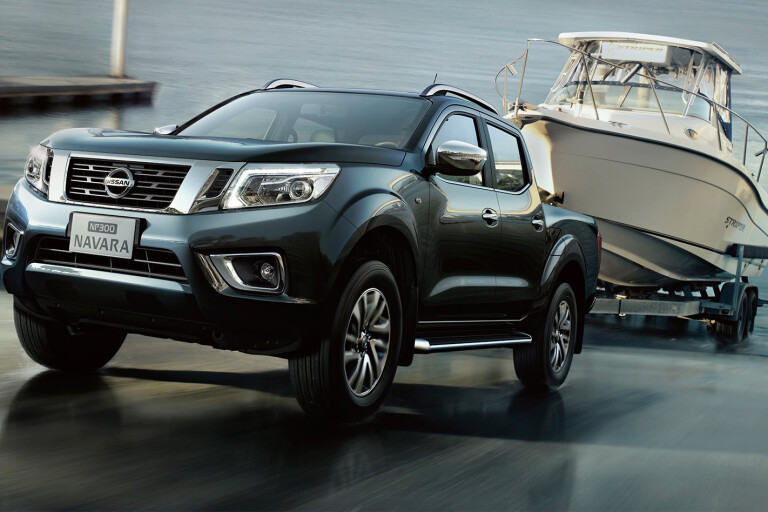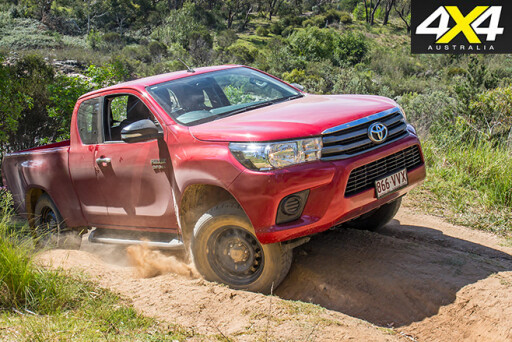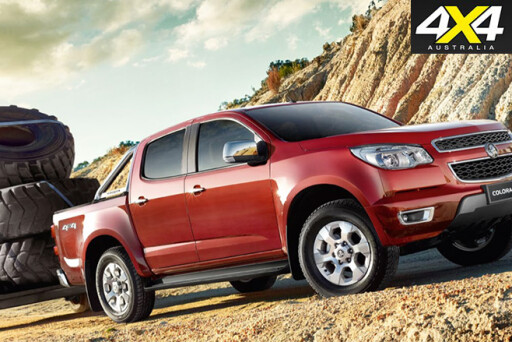
Back in the mid-1990s, the maximum braked towing capacity of most popular large wagons including the 80 Series Land Cruiser and GQ Patrol was 2500kg, while many of the dual-cab 4x4 utes such as the Toyota HiLux and Nissan Navara were, quite sensibly, rated to handle a maximum braked trailer weight of only 1500kg.
Today, if a 4x4 doesn’t have a braked towing capacity of more than 3000kg, it’s simply not in the game, dual-cab utes included. How has this massive increase in towing capacity been achieved?
Logic would suggest four-wheel drive manufacturers are now using stronger materials, cutting-edge design and beefier construction techniques to more than double the braked towing capacity of the latest generation of 4x4 utes, but poke your head beneath one and you won’t spot any significant changes to chassis design or suspension and braking components. Nope, most modern 4x4 utes are still running a separate chassis, leaf springs, live axle rear-ends and disc/drum brake set-ups.
It’s interesting to compare the modest payload increases achieved over the past 20 years to the massive towing-capacity increases. Comparing a base-spec 1995-model Navara dual-cab ute with its modern equivalent, payload has increased by just 24kg (from 1010kg to 1034kg) while braked towing capacity is up a staggering 2000kg (from 1500kg to 3500kg).
 In the case of a base-spec HiLux over the same period, payload has decreased by a whopping 245kg (from 1165kg to 920kg) while braked towing capacity has more than doubled from 1500kg to 3200kg.
In the case of a base-spec HiLux over the same period, payload has decreased by a whopping 245kg (from 1165kg to 920kg) while braked towing capacity has more than doubled from 1500kg to 3200kg.
You might think the vehicle manufacturers use a specifically legislated formula to calculate a vehicle’s maximum towing capacity, but in truth they are left to their own devices to set towing weights.
Factors they take into account include vehicle design, engine output, axle capacity, tyre ratings and the effect that trailer weight will have on the vehicle’s stability and overall durability when towing. It’s likely the marketing teams have input as well – maybe not the final say, but definitely some significant influence.
While hardly anyone will ever hitch a 3.5-tonne trailer to the back of a Navara, Ranger, Colorado, D-Max or BT-50, the fact that the vehicle manufacturers say they can is a bit of a worry. After all, hanging that much weight off the back of a ute that only weighs two tonnes is hardly a recipe for a stable set-up, especially when you consider all that weight is connected to a hitch that is a metre or so behind the rear axle.
When I was first tasked with conducting a towing test back in 1995, I didn’t have a hell of lot of experience with trailers. Sure, I’d occasionally borrowed the old man’s box trailer to drag my dirt bike out to the scrub for a ride, but that was about it. Yet here I was, cruising down the Princes Highway with a two-tonne boat and tandem-axle trailer hooked up behind vehicles including an 80 Series Land Cruiser, a GQ Patrol, a Discovery and a Pajero.
Fortunately I had sense enough to know the key to successfully towing such a sizeable set-up was to keep things smooth – no hard acceleration, no stomping on the brakes and no sudden changes of direction.
 Nevertheless, I had a few moments over the week of testing, and at one time almost got it all crossed up trying to stop at a set of traffic lights that were about to turn red. Luckily the braked towing capacity standard back then was 2500kg and not 3500kg, because I reckon if I’d had an extra tonne behind me I would have been stuffed.
Nevertheless, I had a few moments over the week of testing, and at one time almost got it all crossed up trying to stop at a set of traffic lights that were about to turn red. Luckily the braked towing capacity standard back then was 2500kg and not 3500kg, because I reckon if I’d had an extra tonne behind me I would have been stuffed.
On the positive side, modern four-wheel drives (even utes) are equipped with a number of electronic safety aids that greatly benefit towing, such as ABS, electronic traction control, stability control and, in many vehicles, trailer sway control. Trailer sway control uses sensors in the vehicle – such as for steering input and vehicle yaw – and a mix of engine output and brake control to suppress lateral movement that can be caused by a variety of factors including crosswinds, changes in road surface and steering input. It’s probably the greatest advancement in towing safety over the past 20 years.
Obviously, because it seems that nothing much else has changed.

COMMENTS